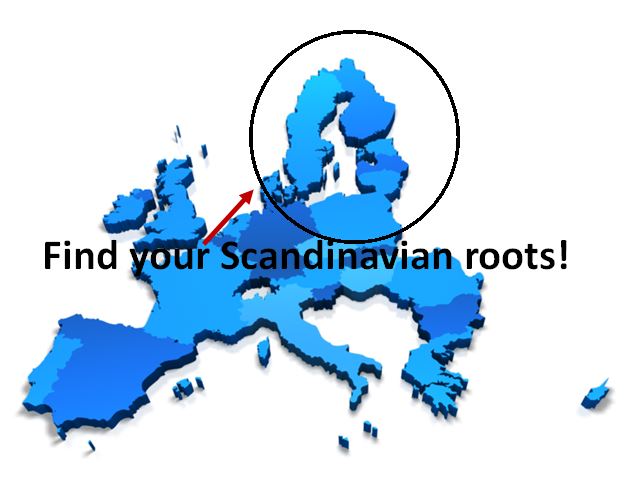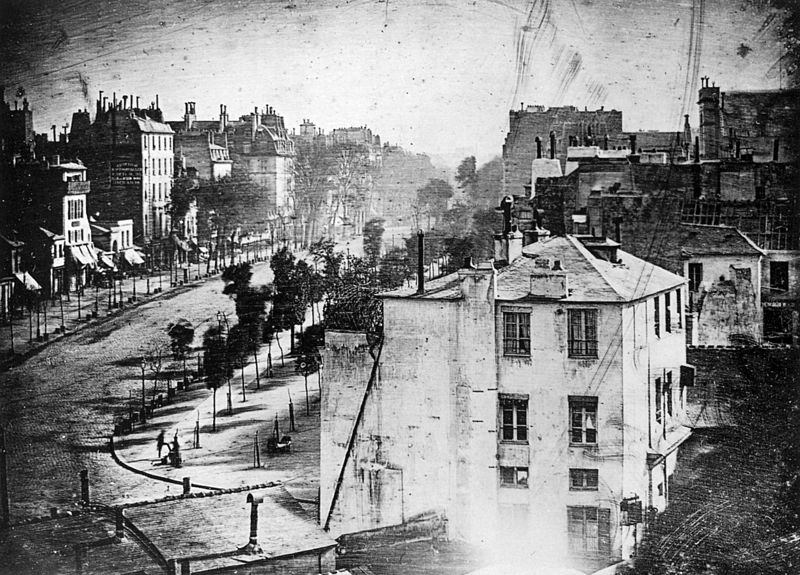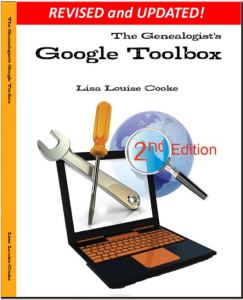by Lisa Cooke | Feb 28, 2015 | 01 What's New, Census, images, MyHeritage, Norwegian, Records & databases
 If you have roots in Denmark or Sweden then you’ll be excited about the email I got recently about Scandinavian genealogy records. Here’s the news from Daniel Horowitz, the Chief Genealogist Officer at MyHeritage.com:
If you have roots in Denmark or Sweden then you’ll be excited about the email I got recently about Scandinavian genealogy records. Here’s the news from Daniel Horowitz, the Chief Genealogist Officer at MyHeritage.com:
“I’m delighted to let you know that we’ve just brought online millions of Scandinavian records–the majority of which have never been digitized or indexed online before.
The entire 1930 Danish census (3.5 million records) is now available online. This is thanks to our partnership with the National Archives of Denmark to index and digitize over 120 million records, including all available Danish census records from 1787-1930 and parish records from 1646-1915, all of which will be released during 2015 and 2016.
We’ve also added the Swedish Household Examination Rolls from 1880-1920, which includes 54 million records with 5 million color images, of which 22 million records are already available online. The remaining records are scheduled to go online before the end of June 2015.”
MyHeritage is a sponsor of the free Genealogy Gems podcast. One reason I’ve partnered with them is that our audiences are both so international. My podcast reaches the entire English-speaking world. MyHeritage is known for its international reach into genealogical records and trees throughout Europe, the Middle East and beyond. Click here to learn what else I love about MyHeritage.
Would you like to get more out of your MyHeritage subscription? Get our digital download quick reference guide to MyHeritage.
Disclosure: This article contains affiliate links and Genealogy Gems will be compensated if you make a purchase after clicking on these links (at no additional cost to you). Thank you for supporting Genealogy Gems!
by Lisa Cooke | Feb 28, 2015 | 01 What's New, History, Memory Lane, Photographs

Boulevard du Temple, Paris, by Louis Daguerre, 1838. Wikimedia Commons image, Scanned from The Photography Book, Phaidon Press, London, 1997.
London. Paris. Athens. Berlin. Bombay. Rome. New York City. Copenhagen. Dublin. Edinburgh. Jerusalem. The oldest known photographs of these cities and more are featured in this post at Abroad in the Yard.
I love the details in these photos that are usually left to our imagination. An 1858 image of a Toronto thoroughfare was likely taken in at its best, since the photo was part of a (failed) bid to become Canada’s capital. And yet the streets are still muddy enough you wouldn’t want to step off that freshly-swept sidewalk, especially if you were in a long dress.
You can read the shop signs in these pictures. See signs of construction and destruction, an eternal presence in these metropolises. Count the number of levels in the tall tenements and other buildings that sheltered our ancestors’ daily lives without air conditioning, central heat or elevators.
Despite the busy city streets shown here, they don’t look busy. So much time had to elapse during the taking of the image that anyone moving wasn’t captured. Only a few loungers and the shoe-shine man (and his customer) appear in these photos of busy streets.
Although not shown in the blog post above, my favorite historical image of a city is the Cincinnati Panorama of 1848, the oldest known “comprehensive photo” of an American city. The resolution of this series of photos is so high, you can see details the photographers themselves couldn’t possibly have caught. The panorama can be explored at an interactive website, which offers “portals” to different parts of the city and city life when you click on them. Whether you had ancestors in this Ohio River town or not, this is a fascinating piece of history.
 Looking for pictures of your ancestor’s hometown or daily life? There are some great search tips in Lisa’s newly-revised and updated 2nd edition of her popular book, The Genealogist’s Google Toolbox. Maybe you already use Google to search for images. Learn how to drill down to just the images you want: black and white pictures, images with faces, images taken of a particular location during a certain time period and more!
Looking for pictures of your ancestor’s hometown or daily life? There are some great search tips in Lisa’s newly-revised and updated 2nd edition of her popular book, The Genealogist’s Google Toolbox. Maybe you already use Google to search for images. Learn how to drill down to just the images you want: black and white pictures, images with faces, images taken of a particular location during a certain time period and more!
by Lisa Cooke | Feb 27, 2015 | 01 What's New, images, Maps, United States
 Do you have ancestors who lived in the “Windy City” of Chicago, Illinois (USA)? You should check out Chicago in Maps, a web portal to historic, current and thematic maps.
Do you have ancestors who lived in the “Windy City” of Chicago, Illinois (USA)? You should check out Chicago in Maps, a web portal to historic, current and thematic maps.
As the News-Gazette reports, “There are direct links to over three dozen historic maps of Chicago, from 1834 to 1921. The thematic maps include Chicago railroad maps, transit maps and geological maps.”
Of course, there are current maps, too, including a Chicago street guide for 2014. There’s a fascinating set of maps showing the effects of landfill projects. The Sources and Links page directs users to helpful guides to street name changes and house numbers. You’ll find links to surveyors’ maps, too.
From the home page, you can also click to a sister site on Chicago streetcars that includes a 1937 map of streetcar lines. (There’s a second sister site on Chicago bridges.)
 Genealogy Gems Premium members can learn more about using maps for family history research in my online video class, 5 Ways to Enhance Your Genealogy Research with Old Maps. To learn more about the benefits of Premium membership (including a year’s full access to over 2 dozen full-length video classes), click here.
Genealogy Gems Premium members can learn more about using maps for family history research in my online video class, 5 Ways to Enhance Your Genealogy Research with Old Maps. To learn more about the benefits of Premium membership (including a year’s full access to over 2 dozen full-length video classes), click here.
by Lisa Cooke | Feb 26, 2015 | 01 What's New, Beginner, images, Newspaper, Records & databases, United States
 Do you have obituaries for all your relatives who have died in the past 40 years or so? You should.
Do you have obituaries for all your relatives who have died in the past 40 years or so? You should.
Obituaries–even the most recent ones–can jump-start your research on a new family line or tackle a branch that doesn’t seem to be going anywhere.
Why? Our “collateral kin” (cousins, aunts and uncles) often lived near, intermarried with and otherwise had contact with other relatives we really want to find.
That’s where recent obituaries come in. The lists of names they contain help us identify relatives (and their spouses) we may not even have known about. Places mentioned can lead us to more records, as can clues about jobs, church affiliation and where someone went to school.
FamilySearch and GenealogyBank are indexing millions of recent obituaries from GenealogyBank’s extensive newspaper collection. Search the free index, with ongoing updates (24.4 million names recently added) at United States, GenealogyBank Obituaries, 1980-2014. Search by name or browse by state and then by the name of the newspaper. Check back often!
 Click here to read a post about how valuable an obituary was in helping me learn more about my long-lost great uncle Paul McClellan.
Click here to read a post about how valuable an obituary was in helping me learn more about my long-lost great uncle Paul McClellan.
Learn more about newspaper research (including how to find obituaries) in Lisa’s book How to Find Your Family History in Newspapers. There’s an entire chapter on online digitized newspaper collections, and one on online resources for finding newspapers (either online or offline). Yet another chapter is devoted to African American newspapers. This book will teach you to find all those elusive obituaries–and plenty more mentions of your family in old newspapers.
by Lisa Cooke | Feb 25, 2015 | 01 What's New, Book Club, Conferences, DNA, FamilySearch, Genealogy Gems Podcast, RootsTech
 The newest episode of the FREE Genealogy Gems podcast–episode 176–has published and it is PACKED with gems!
The newest episode of the FREE Genealogy Gems podcast–episode 176–has published and it is PACKED with gems!
Lisa begins with her own in-depth comments on RootsTech 2015. Whether you attended or didn’t, I think you’ll find her front-row analysis of the world’s biggest family history event pretty interesting! I appreciate her insight that RootsTech isn’t just about teaching people to do family history. It’s about motivating and inspiring their legacy-building efforts. I have sometimes felt a lack of that at conferences myself: I get a lot of how-to but not the energizing “why-to” that I sometimes need myself.
I join Lisa to talk about the Genealogy Book Club and MORE great reads for family history lovers. We’re still reading Orphan Train by Christina Baker Kline, which offers up a history lesson about the thousands of neglected children who were shipped off by train to rural homes in the U.S. and Canada. In the context of an unlikely friendship between an elderly orphan train rider and a modern teenage girl in the foster care system, we learn how much of a child’s identity comes wrapped up in their family’s backstory. Lisa and I also talk about writing family history using different voices. I recommend books written in a few different voices, or styles.
Another great segment in this episode is the topic of yDNA research and surname studies. Genetics is re-invigorating those “one-name” groups that explore their common surname heritage. As in every episode of the Genealogy Gems podcast, you’ll get some great tips and learn about online resources you may not have seen. You’ll hear from our listeners and readers with questions and comments. And we hope you’ll respond with your own! Click here to listen to the podcast and read the show notes.

 If you have roots in Denmark or Sweden then you’ll be excited about the email I got recently about Scandinavian genealogy records. Here’s the news from Daniel Horowitz, the Chief Genealogist Officer at MyHeritage.com:
If you have roots in Denmark or Sweden then you’ll be excited about the email I got recently about Scandinavian genealogy records. Here’s the news from Daniel Horowitz, the Chief Genealogist Officer at MyHeritage.com:











